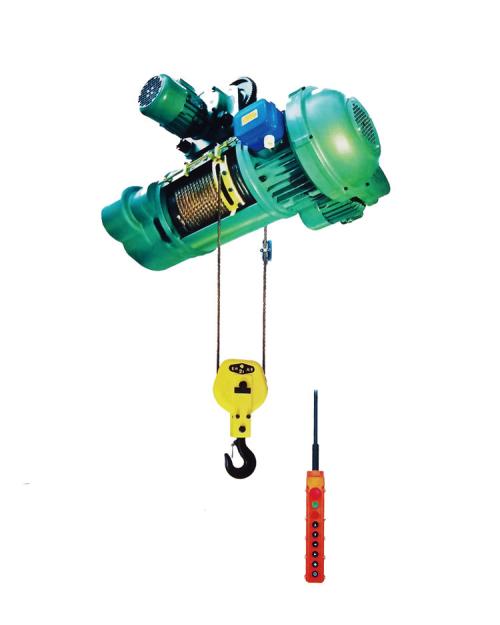
Common sense of electric hoist you don't know
Keyword:electric hoist Time:2019-1-6 8:38:58
There are many brands and models of electric hoists on the market now. We often see such devices installed on gantry cranes and cranes to help you carry out lifting operations. Especially for docks, warehouses, industrial and mining enterprises and other fields, such devices can absolutely bring convenient operation for everyone. Let's take a brief look at some common knowledge you may not know in the process of using electric hoist.
In order to run more smoothly in the later period, we must choose the equipment that meets the site conditions and working environment when selecting. Because each type of electric hoist has its own performance characteristics, specifications and sizes, it is suggested that we select it according to the actual use needs and site conditions.
The installation of this kind of lifting device is also quite critical. Before the installation procedure is completed, it can‘t be operated by electricity, and even more can‘t be run without load.
The operation of electric hoist must be carried out by professionals. The on-the-job staff need to undergo systematic training and pass professional examination before they can work on the job.
If in the process of using this kind of equipment, it is found that there are abnormal phenomena or different degrees of malfunction in the equipment. The power supply must be cut off immediately, and report to the superior in time, and request professional maintenance personnel to come to deal with it. Only after troubleshooting and abnormal phenomena are guaranteed can work be restarted.
According to the use of this kind of electric hoist, we must take appropriate lubrication measures, especially for the selection of lubricating oil and storage, not to sloppy, remember not to use deteriorated or contaminated lubricating oil products.
It is suggested that the wearable parts of each part should be inspected regularly, and the parts should be replaced according to the degree of wear and tear, so as to avoid all kinds of faults in time and effectively.
After every maintenance and repair, we should take the form of written records, so that failure problems can be traced in the future.
For the lifting and running reducer of electric hoist, it is necessary to inject oil into the self-filling hole during lubrication to ensure lubrication once every six months, and the lubricant must choose professional mechanical oil. When wire rope and drum are lubricated, it is necessary to apply lubricating oil to the surface. The grease of wire rope can be used as lubricating oil to ensure that it is lubricated once a week as far as possible. When the wheel of hook pulley bearing is lubricated, it is necessary to squeeze the lubricating oil into it, and the lubricating oil should also be special, so as to ensure the lubrication once every six months as far as possible. The harmonic and running motors should be lubricated by smearing and lubricating once every six months.
Electric hoist can be installed by crane according to the actual situation of construction site. Of course, hoist can also be used to set up pulley group hoisting. When hoisting, special attention must be paid to the use of protective measures, so as to ensure that the equipment is not damaged. After installation, test run should be carried out. After power supply is connected, it is necessary to check whether the direction of each motor is the same as that of the control button.
In recent years, more and more manufacturers began to purchase such lifting devices. Electric hoist, as a kind of mechanical equipment to help businesses in all walks of life to improve labor efficiency and ensure work efficiency, can effectively reduce the labor intensity of staff. Hope that through the above brief introduction, we can let you have a deeper understanding of the common sense of the use of such lifting hoist device.


- No information
-
1. Design objective of electronic crane scale network management. (1) Adopt advanced distributed data processing techno…
-
Electronic crane scale bearing platform installation to focus Electronic crane scale can be installed generally on the li…


